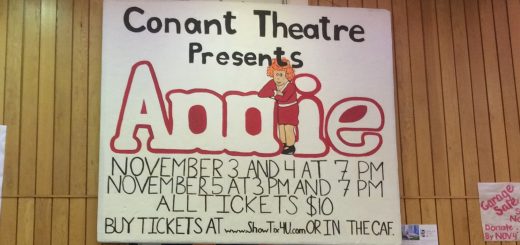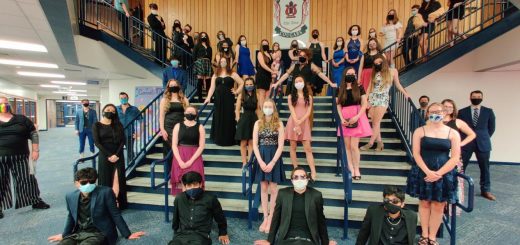‘Back to the Future: The Musical’ lacks electricity

Most people are familiar with the 1985 blockbuster, “Back to the Future” where teenager Marty McFly accidentally travels back in time 30 years in a DeLorean time machine crafted by his eccentric scientist friend, Doc, and has to make sure his parents meet and fall in love, so Marty and his siblings don’t cease to exist.
However, far fewer people are aware that a musical adaptation of the movie called “Back to the Future: The Musical” hit Broadway in June of 2023 and is currently on a North American tour. There are many small differences between the movie and the musical, likely being made to make scenes more realistic for the stage. Some of these changes include Doc’s death being from plutonium poisoning and the DeLorean being voice-activated by Doc’s voice alone. However, as a casual fan, none of these changes had a significant impact on my understanding or enjoyment of the show.
What concerned me, however, was the show’s prioritization of flashy spectacle and nostalgia over a compelling script and score.
The songs were simple and left much to be desired. Of the whole score, the only song I really enjoyed was “For the Dreamers,” but being a ballad, I hardly walked out of the theater singing along. Of course, “Power of Love” is incredibly catchy, but I don’t give the musical credit for it since it’s one of a few songs in the show that is reused from the movie.
Overall, this show was neither moving nor particularly funny. There were several moments that were so cheesy it became awkward, and jokes never hit quite right.
“Back to the Future: The Musical” relied more on nostalgia than anything else, but their plays for nostalgia were hardly effective. When the curtain rose, the ensemble emerged decked out in full Jane Fonda-esque neon activewear. My mom, who graduated high school in 1985, the year “Back to the Future” takes place, leaned over to me and whispered in my ear, “Nobody dressed like that in the ‘80s.”
In playing up the nostalgia, some of the charm of the original film is lost. This is only worsened by the musical’s emphasis on spectacle over creating an invigorating script and score.
I have never been a fan of projections in theatre. While I do think they are useful in very specialized circumstances, projected backgrounds and other elements often feel cheap and artificial.
Yet, somehow “Back to the Future: The Musical” in its ample use of projections, almost managed to sway me. The projections I enjoyed the most were the ones done on a semi-translucent screen that would come down at the front end of the stage to allow projections to exist in front of the on-stage action (see how the projections were designed here.)
This was most commonly used for the scenes where Marty was driving the DeLorean. Naturally, when you’re on stage, you can’t have a car racing down a road at 88 miles per hour, so some creative-thinking becomes necessary. As Marty drove, a cityscape, beams of light indicating speed and direction, and numbers showing what speed the car was reaching were projected both in front of and behind him. These impressive effects made the car look like it might actually be speeding down a road at breakneck speed.
This drop-down screen was also used when Doc tries to fix the clock tower wires and parts of the tower are crumbling beneath him. The crumbling itself was a bit underwhelming, but I struggled to tell where the set piece ended and the projection began, which was a delight to behold.
Yet, despite the marvel of these projection-based effects, every time the screen rose, the sets and characters on the stage looked so much more vibrant and alive. I understand and appreciate the use of projections in this show, but I can’t help but wonder how much of it could have been accomplished with some lights, sounds, and creative problem-solving.
After all, part of the joy of theatre is witnessing things live, so theater-goers understand that a theatrical production necessitates a higher suspension of disbelief than, say, a movie. Projections aren’t necessary to make audiences have fun and believe in the story unfolding on the stage.
That night I left the theatre feeling particularly uninspired. “Back to the Future: The Musical” focused more on spectacle than on creating a show that made its audience feel alive. I can only hope this was an anomaly and not a trend of what musical theatre is to become.




Recent Comments